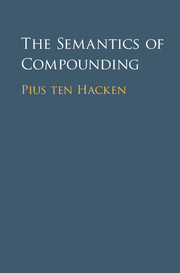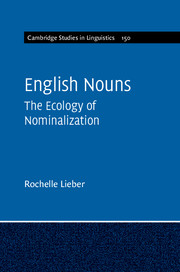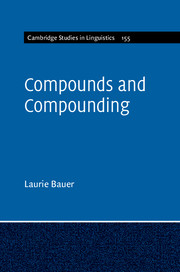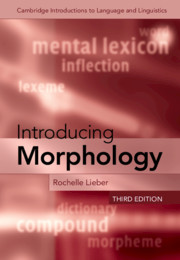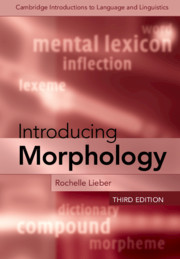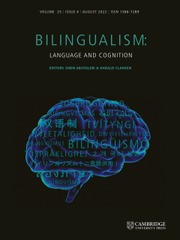The Semantics of Compounding
The question of how to determine the meaning of compounds was prominent in early generative morphology, but lost importance after the late 1970s. In the past decade, it has been revived by the emergence of a number of frameworks that are better suited to studying this question than earlier ones. In this book, three frameworks for studying the semantics of compounding are presented by their initiators: Jackendoff's Parallel Architecture, Lieber's theory of lexical semantics, and Štekauer's onomasiological theory. Common to these presentations is a focus on English noun-noun compounds. In the following chapters, these theories are then applied to different types of compounding (phrasal, A+N, neoclassical) and other languages (French, German, Swedish, Greek). Finally, a comparison highlights how each framework offers particular insight into the meaning of compounds. An exciting new contribution to the field, this book will be of interest to morphologists, semanticists and cognitive linguists.
- Offers an invaluable comparison of how the different frameworks are explored in the text function
- Chapters on English, French, German, Swedish and Greek extend the theories across languages
- Unique material on phrasal, A+N and neoclassical compounds
Product details
May 2016Hardback
9781107099708
266 pages
235 × 158 × 20 mm
0.53kg
6 b/w illus. 10 tables
Available
Table of Contents
- 1. Introduction: compounds and their meaning Pius ten Hacken
- Part I. Frameworks:
- 2. English noun-noun compounds in conceptual semantics Ray Jackendoff
- 3. Compounding in the lexical semantic framework Rochelle Lieber
- 4. Compounding from an onomasiological perspective Pavol Štekauer
- Part II. Noun-Noun Compounds:
- 5. Categorizing the modification relations in French relational subordinate [NN]N compounds Pierre J. L. Arnaud
- 6. The semantics of NN combinations in Greek Zoe Gavriilidou
- 7. The semantics of compounds in Swedish child language Ingmarie Mellenius and Maria Rosenberg
- 8. The semantics of primary NN compounds: from form to meaning, and from meaning to form Jesús Fernández-Domínguez
- Part III. Other Compound Types:
- 9. An analysis of phrasal compounds in the model of parallel architecture Carola Trips
- 10. Adjective-noun compounding in parallel architecture Barbara Schlücker
- 11. Neoclassical compounds in the onomasiological approach Renáta Panocová
- 12. Three analyses of compounding: a comparison Pius ten Hacken.

